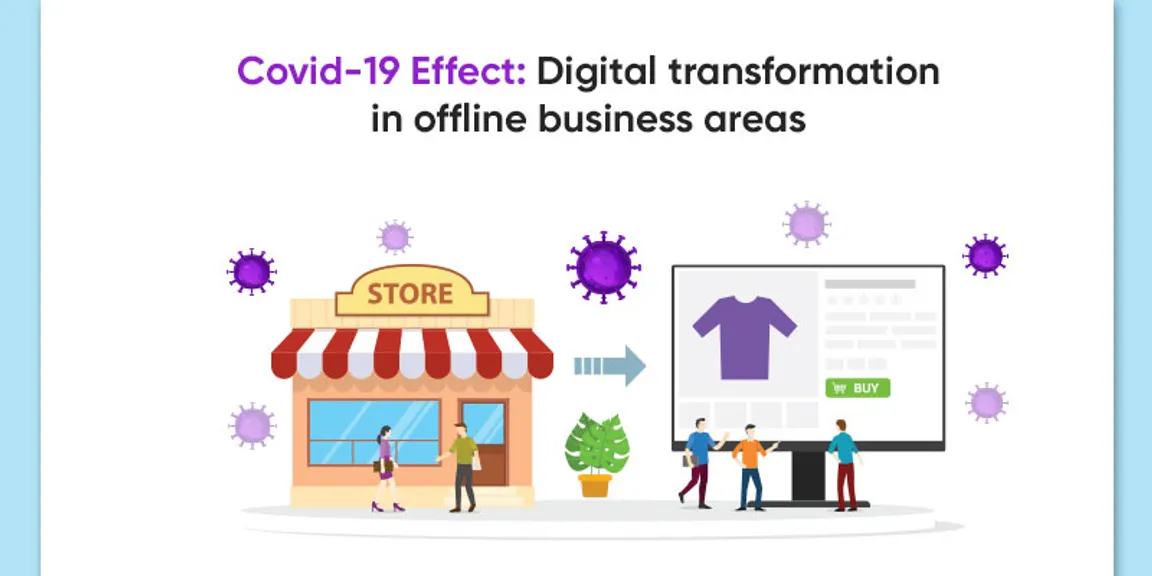

Covid-19 Effect: Digital Transformation in Offline Business Areas
Challenges resulting from the spread of coronavirus (COVID-19) are likely to intensify the use of current and emerging technologies and resources. As millions are working from home, digital communication is taking even more of a grip on daily behaviors.
Globally, the adoption of online shopping has gained momentum, thanks to technology improvements (speed and cost), engagement, accountability, and confidence. The adoption process is a common tale all over the world. The food, travel, and entertainment categories have been the frontline runners in many countries for customers to join the retail sphere online, followed by beauty and personal care. But other categories of foodstuffs, specially packaged and fresh goods, were slower to gain traction in some markets. However, today COVID-19 is driving faster transitions.
Interrupted shipments direct customers to manufacturers
With retail supply chains being gradually challenged due to COVID-19 precautions, many consumers may have initially faced empty shelves when searching for high-demand products in-store as well as online. And this could compel some consumers to to look for alternative online sources. Direct-to-consumer (DTC) companies have grown at a rapid pace in recent years, driven largely by smaller, often local players who have recognized niche markets or customer needs, and realize the advantages of technologically powered direct consumer reach.
It would also give a fillip for adopting technology and serving the consumer better, whether it's a big store or a neighborhood store. From a sales channel viewpoint, this is definitely a moment when technology adoption will pick up. It is reflecting on customer preferences during COVID-19 lockdown.
A very clear hike could be seen in the need for hygiene and nutrition products and there would be no question about that. We would be willing to provide this to shoppers and consumers in whatever channel they wish. Commenting on the current output situation, experts say that the emphasis should be on products that people are in demand.
How to get started for digital transformation?
Companies are forced to seriously consider implementing a digital transformation strategy in today's fast-moving, always connected and always on the society, if they have not done it already. Digital transformation offers organizations the opportunity to engage modern buyers and deliver a seamless customer experience regardless of channel or location to their expectations. In case if you are also planning to digitalize your business, here are 3 things to consider:
- Instead of buying solutions at the site, first think about cloud solutions. Such solutions lets you to be agile and quickly meet customer requirements. Plus, you're updated with the latest features automatically, so you're never left behind.
- What your customers have come to expect are personalized experiences. Use the data in your CRM software to help you evaluate prior correspondence, the history of purchases, and their behavior.
- Customers want seamless experiences, no matter what channel. Consider how you can tie together all the digital channels you have in your company to provide a single, user-friendly customer experience.
By focusing on these 3 factors, you'll help your organization embrace the new digital landscape, exceed customer expectations, and enhance customer experience overall.
Prepare for a Digital Future
New learning for distributors and suppliers are becoming apparent as the consequences for customers multiply. China has shown how companies leverage powerful technology to allow consumers to integrate into all aspects of people's lives during adversity.
Progress in the use of technology starts with the basic functionality that smartphones offer such as product discovery and mobile payments. As consumers become more familiar with these tools, more developments such as auto-subscriptions and personalized location notifications can change the way consumers purchase and accelerate the adoption trajectory of more advanced tools such as A / VR.
And these will begin to widen as consumers recognize the advantages they can bring in both convenience and experience. In the immediate and long-term, the development would be one of the most important game-changers for FMCG retailers and manufacturers.


